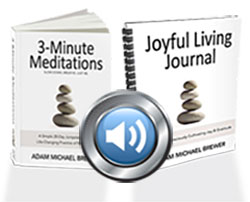 |
 |
Home
> Buddhist Breath Meditation
Seven Steps Buddhist Breath Meditation
-
Buddhist breath meditation one. Start out with three or seven long in-and-out breaths, thinking bud- with the in-breath and dho with the out. Keep the meditation syllable as long as the breath.
-
Buddhist breath meditation two : Be clearly aware of each in-and-out breath during this meditation.
-
Buddhist breath meditation three : Observe the breath as it goes in and out, noticing whether it's comfortable or uncomfortable, broad or narrow, obstructed or free-flowing, fast or slow, short or long, warm or cool. If the breath doesn't feel comfortable, change it until it does. For instance, if
breathing in long and out long is uncomfortable, try breathing in short and out short. As soon as you find that your breathing feels comfortable, let this comfortable breath sensation spread to the different parts of the body.
To begin with, inhale the breath sensation at the base of the skull and let it flow all the way down the spine. Then, if you are male, let it spread down your right leg to the sole of your foot, to the ends of your toes, and out into the air. Inhale the breath sensation at the
base of the skull again and let it spread down your spine, down your left leg to the ends of your toes and out into the air. (If you are female, begin with the left side first, because the male and female nervous systems are different.)
Then let the breath from the base of the skull spread down over both shoulders, past your elbows and wrists, to the tips of your fingers and out into the air.
Let the breath at the base of the throat spread down the central nerve at the front of the body, past the lungs and liver, all the way down to the bladder and colon.
Inhale the breath right at the middle of the chest and let it go all the way down to your intestines.
Let all these breath sensations spread so that they connect and flow together, and you'll feel a greatly improved sense of well-being.
- Buddhist breath meditation four : Learn four ways
of adjusting the breath:
-
a. in long and out long
b. in short and out short,
c. in short and out long,
d. in long and out short.
Breathe whichever way is most comfortable for you. Or, better yet, learn to breathe comfortably all four ways, because your physical condition and your breath are always changing.
-
Buddhist breath meditation five : Become acquainted with the bases or focal points of the mind--the resting spots of the breath--and center your awareness on whichever one seems most comfortable. A few of these bases are:
a. the tip of the nose,
b. the middle of the head,
c. the palate,
d. the base of the throat,
e. the breastbone (the tip of the sternum),
f. the navel (or a point just above it).
If you suffer from frequent headaches or nervous problems, don't focus on any spot above the base of the throat. And don't try to force the breath or put yourself into a trance. Breathe freely and naturally. Let the mind be at ease with the breath--but not to the point where it slips away.
-
Buddhist breath meditation six : Spread your awareness--your sense of conscious feeling--throughout the entire body.
-
Buddhist breath meditation seven : Coordinate the breath sensations throughout the body, letting them flow together comfortably, keeping your awareness as broad as possible.
May your Meditation bring you inner peace and harmony.
Home | Disclaimer | Privacy Policy
You must accept and agree to our Privacy Policy to use our Services.
Be a light to others and you wont stumble on your own path. Meditation is a process of careful thought consideration.
Please email your thoughts, suggestions, opinions and inspirations to us via our Contact Us page


